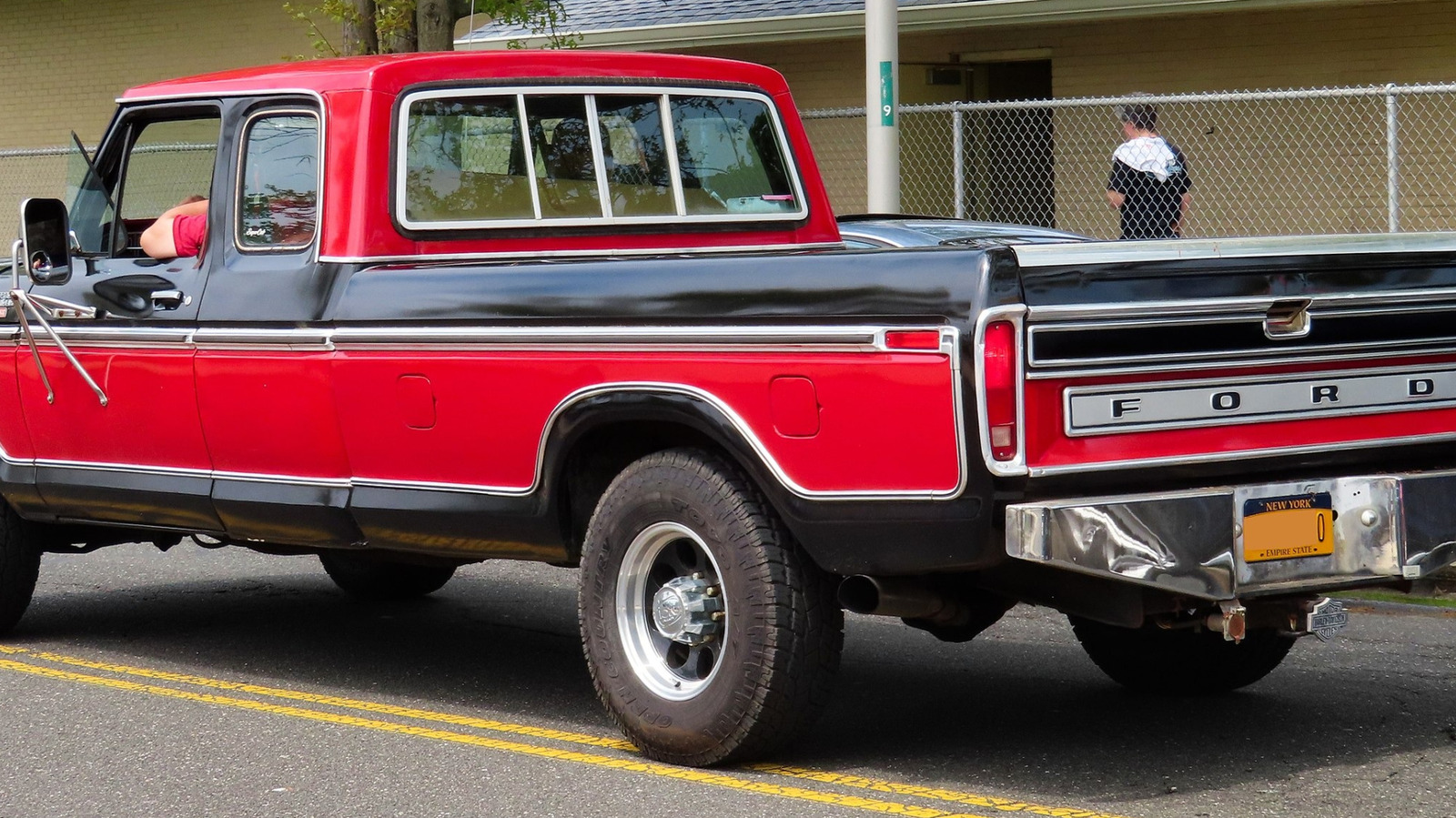To today’s motorists an older Ford F-250 with two fuel filler doors on its flank might be an odd sight, but decades ago this wasn’t unusual for pickup trucks. Yes there actually were two fuel tanks behind those body panels, and the extra fuel capacity was there to increase the range of these workhorses. In the days before transmissions with overdrive, fuel injection, and other technological advancements, fuel economy wasn’t as good as it is today. When Congress enacted Corporate Average Fuel Economy (CAFE) standards in 1978, each automaker’s light trucks only had to average 17. 5 miles per gallon. The requirement for 2031 is 45. 2mpg for trucks and 65. 10mpg for passenger cars, reflecting the positive effects of the steadily-increasing requirement. CAFE standards remain in place for the future, although the recent budget bill took away the federal government’s ability to fine automakers for violating them. As for those older trucks, owners of 1978 Ford F-250 pickups report to Fuelly an average of just over 8 mpg. Adding extra fuel capacity to increase its driving range seems like an obvious solution, but why split that capacity between two tanks versus fitting one large tank? First off, it’s easier to design and install two smaller tanks compared to a single humongous one. Having two tanks also means the weight of the extra fuel 6. 1 pounds per U. S. gallon can be distributed more evenly around the chassis. Ford placed one tank under the front of the bed and another at the rear, which helped balance the truck and improve traction on some surfaces. On the other hand, Chevrolet favored placing one tank on either side of the truck, which turned out to be a deadly mistake. Chevy’s twin fuel tank design was appropriately called “side saddle” with the two tanks sitting outside the frame rails on either side of the truck. You may have realized this quicker than the engineers at General Motors, but placing 20 gallons of gasoline outside each frame rail with only body panels for shielding may not have been the smartest move. Between 1973 and 2009 hundreds of people were killed in Chevy C/K pickup truck crashes that resulted in fires. Beyond that fatal flaw in Chevy trucks there were plenty of other issues with other manufacturers’ dual-tank setups. Switches, gauges, and valves would sometimes malfunction, making one or both tanks unusable. Some drivers had trouble filling up, especially if the tanks were on opposite sides of the truck. If a driver had a quick memory lapse after hopping out of their truck, mistakes could lead to underfilling or overfilling one or both tanks. Nowadays, most manufacturers offer 30-plus gallon tanks on their pickup trucks, making dual-tank setups unnecessary. For example, the 2025 Ford F-250 Super Duty pickup comes standard with a 34-gallon tank (a 48-gallon unit is optional). The EPA doesn’t test trucks that big, but most owner and expert reports place the F-250’s consumption at 15-20 mpg. That’s enough fuel to drive more than 700 miles between fill-ups with the larger tank. If you simply must have the long-haul capacity of dual tanks, there are bed-mounted aftermarket auxiliary tanks for most modern pickup trucks.
https://www.jalopnik.com/1996114/why-some-pickup-trucks-have-two-gas-tanks/
Was Extra Range The Only Point Of Pickup Trucks Having Two Gas Tanks?
